Dangling In A Previously Unexplored Lava Tunnel On The Moon...
Dangling in a previously unexplored lava tunnel on the Moon...
...with a massive solar flare passing overhead...
...causing unsafe radiation levels.
All communications have been interrupted.
Status of Commander Callie Rodriguez: unknown.
In our first issue of "First Woman," we followed Callie on her trailblazing journey to the Moon. Find out what’s next for our fictional first woman in a story inspired by real NASA astronauts and our upcoming Artemis missions to land the first female astronaut and person of color on the lunar surface.
See what discoveries – and challenges – lay ahead for Callie and her fellow human and robotic explorers as they forge a path to expand humanity's understanding of the universe.
Coming soon in English and Spanish at nasa.gov/calliefirst!
Make sure to follow us on Tumblr for your regular dose of space!
More Posts from Nasa and Others
Our Galaxy is Caught Up in a Giant Cosmic Cobweb! 🕸️

If we could zoom waaaay out, we would see that galaxies and galaxy clusters make up large, fuzzy threads, like the strands of a giant cobweb. But we'll work our way out to that. First let's start at home and look at our planet's different cosmic communities.
Our home star system
Earth is one of eight planets — Mercury, Venus, Earth, Mars, Jupiter, Saturn, Uranus, and Neptune — that orbit the Sun. But our solar system is more than just planets; it also has a lot of smaller objects.
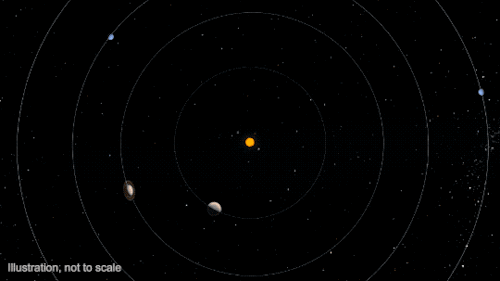
An asteroid belt circles the Sun between Mars and Jupiter. Beyond Neptune is a doughnut-shaped region of icy objects called the Kuiper Belt. This is where dwarf planets like Pluto and Makemake are found and is likely the source of short-period comets (like Haley’s comet), which orbit the Sun in less than 200 years.
Scientists think that even farther out lies the Oort Cloud, also a likely source of comets. This most distant region of our solar system is a giant spherical shell storing additional icy space debris the size of mountains, or larger! The outer edge of the Oort Cloud extends to about 1.5 light-years from the Sun — that’s the distance light travels in a year and a half (over 9 trillion miles).

Sometimes asteroids or comets get ejected from these regions and end up sharing an orbit with planets like Jupiter or even crossing Earth’s orbit. There are even interstellar objects that have entered the inner solar system from even farther than the Oort Cloud, perhaps coming all the way from another star!
Our home galaxy
Let's zoom out to look at the whole Milky Way galaxy, which contains more than 100 billion stars. Many are found in the galaxy’s disk — the pancake-shaped part of a spiral galaxy where the spiral arms lie. The brightest and most massive stars are found in the spiral arms, close to their birth places. Dimmer, less massive stars can be found sprinkled throughout the disk. Also found throughout the spiral arms are dense clouds of gas and dust called nebulae. The Sun lies in a small spiral arm called the Orion Spur.

The Milky Way’s disk is embedded in a spherical “halo” about 120,000 light-years across. The halo is dotted with globular clusters of old stars and filled with dark matter. Dark matter doesn’t emit enough light for us to directly detect it, but we know it’s there because without its mass our galaxy doesn’t have enough gravity to hold together!
Our galaxy also has several orbiting companion galaxies ranging from about 25,000 to 1.4 million light-years away. The best known of these are the Large and Small Magellanic Clouds, which are visible to the unaided eye from Earth’s Southern Hemisphere.
Our galactic neighborhood

The Milky Way and Andromeda, our nearest neighboring spiral galaxy, are just two members of a small group of galaxies called the Local Group. They and the other members of the group, 50 to 80 smaller galaxies, spread across about 10 million light-years.
The Local Group lies at the outskirts of an even larger structure. It is just one of at least 100 groups and clusters of galaxies that make up the Virgo Supercluster. This cluster of clusters spans about 110 million light-years!

Galaxies aren’t the only thing found in a galaxy cluster, though. We also find hot gas, as shown above in the bright X-ray light (in pink) that surrounds the galaxies (in optical light) of cluster Abell 1413, which is a picturesque member of a different supercluster. Plus, there is dark matter throughout the cluster that is only detectable through its gravitational interactions with other objects.
The Cosmic Web
The Virgo Supercluster is just one of many, many other groups of galaxies. But the universe’s structure is more than just galaxies, clusters, and the stuff contained within them.

For more than two decades, astronomers have been mapping out the locations of galaxies, revealing a filamentary, web-like structure. This large-scale backbone of the cosmos consists of dark matter laced with gas. Galaxies and clusters form along this structure, and there are large voids in between.
The scientific visualizations of this “cosmic web” look a little like a spider web, but that would be one colossal spider! <shudder>

And there you have the different communities that define Earth’s place in the universe. Our tiny planet is a small speck on a crumb of that giant cosmic web!
Want to learn even more about the structures in the universe? Check out our Cosmic Distance Scale!
Make sure to follow us on Tumblr for your regular dose of space.

Jupiter in infrared light, as seen by NASA’s InfraRed Telescope Facility (IRTF). The observations were obtained in support of NASA’s Juno mission by a team headed by Juno scientist Glenn Orton.
Sit Back and Space Out
Peer out on the depths of universe from the cupola windows,
Meander through the hallways of space,
Float in the home office of the star sailors.
Allow yourself to - space out - and imagine life through the eyes of NASA Astronauts on the International Space Station.
Check out other ways to enjoy #NASAatHome, HERE. We've curated videos, activities and fun in one out-of-this world place.
Make sure to follow us on Tumblr for your regular dose of space: http://nasa.tumblr.com.
Student Experiments Soar!
Have you ever wondered what it takes to get a technology ready for space? The NASA TechRise Student Challenge gives middle and high school students a chance to do just that – team up with their classmates to design an original science or technology project and bring that idea to life as a payload on a suborbital vehicle.
Since March 2021, with the help of teachers and technical advisors, students across the country have dreamed up experiments with the potential to impact space exploration and collect data about our planet.
So far, more than 180 TechRise experiments have flown on suborbital vehicles that expose them to the conditions of space. Flight testing is a big step along the path of space technology development and scientific discovery.
The 2023-2024 TechRise Challenge flight tests took place this summer, with 60 student teams selected to fly their experiments on one of two commercial suborbital flight platforms: a high-altitude balloon operated by World View, or the Xodiac rocket-powered lander operated by Astrobotic. Xodiac flew over the company’s Lunar Surface Proving Ground — a test field designed to simulate the Moon’s surface — in Mojave, California, while World View’s high-altitude balloon launched out of Page, Arizona.


Here are four innovative TechRise experiments built by students and tested aboard NASA-supported flights this summer:

1. Oobleck Reaches the Skies
Oobleck, which gets its name from Dr. Seuss, is a mixture of cornstarch and water that behaves as both a liquid and a solid. Inspired by in-class science experiments, high school students at Colegio Otoqui in Bayomón, Puerto Rico, tested how Oobleck’s properties at 80,000 feet aboard a high-altitude balloon are different from those on Earth’s surface. Using sensors and the organic elements to create Oobleck, students aimed to collect data on the fluid under different conditions to determine if it could be used as a system for impact absorption.

2. Terrestrial Magnetic Field
Middle school students at Phillips Academy International Baccalaureate School in Birmingham, Alabama, tested the Earth’s magnetic field strength during the ascent, float, and descent of the high-altitude balloon. The team hypothesized the magnetic field strength decreases as the distance from Earth’s surface increases.

3. Rocket Lander Flame Experiment
To understand the impact of dust, rocks, and other materials kicked up by a rocket plume when landing on the Moon, middle school students at Cliff Valley School in Atlanta, Georgia, tested the vibrations of the Xodiac rocket-powered lander using CO2 and vibration sensors. The team also used infrared (thermal) and visual light cameras to attempt to detect the hazards produced by the rocket plume on the simulated lunar surface, which is important to ensure a safe landing.

4. Rocket Navigation
Middle and high school students at Tiospaye Topa School in LaPlant, South Dakota, developed an experiment to track motion data with the help of a GPS tracker and magnetic radar. Using data from the rocket-powered lander flight, the team will create a map of the flight path as well as the magnetic field of the terrain. The students plan to use their map to explore developing their own rocket navigation system.
The 2024-2025 TechRise Challenge is now accepting proposals for technology and science to be tested on a high-altitude balloon! Not only does TechRise offer hands-on experience in a live testing scenario, but it also provides an opportunity to learn about teamwork, project management, and other real-world skills.
“The TechRise Challenge was a truly remarkable journey for our team,” said Roshni Ismail, the team lead and educator at Cliff Valley School. “Watching them transform through the discovery of new skills, problem-solving together while being driven by the chance of flying their creation on a [rocket-powered lander] with NASA has been exhilarating. They challenged themselves to learn through trial and error and worked long hours to overcome every obstacle. We are very grateful for this opportunity.”
Are you ready to bring your experiment design to the launchpad? If you are a sixth to 12th grade student, you can make a team under the guidance of an educator and submit your experiment ideas by November 1. Get ready to create!

Make sure to follow us on Tumblr for your regular dose of space!
First piece of Orion’s Artemis III pressure vessel arrives at NASA’s Michoud Assembly Facility in New Orleans. https://blogs.nasa.gov/artemis/2020/08/25/first-piece-of-artemis-iii-orion-delivered-to-nasa/
What responsibility and duties does your job include?

Photograph of the Apollo 13 Spacecraft Being Returned to the Prime Recovery Ship, USS Iwo Jima, 4/17/1970
Series: Color Photograph Files, 1965 - 2002. Record Group 255: Records of the National Aeronautics and Space Administration, 1903 - 2006.
Apollo 13 was intended to be the third Apollo mission to land on the Moon. The craft was launched from Kennedy Space Center in Merritt Island, Florida on April 11, 1970. Two days into the flight, damaged wire insulation inside the oxygen tank in the service module ignited, causing an explosion which vented the oxygen tank into space. Without oxygen, the service module became inoperable and the lunar mission quickly turned into a mission to safely return the crew to Earth. The astronauts worked with Mission Control to shut down the command module in order to conserve the remaining oxygen, forcing all three astronauts into the lunar module. The astronauts continued to work with Mission Control to combat one technical failure after another until, on April 17, 1970, the crew landed safely in the South Pacific Ocean.
source: phillyarchives.tumblr.com
Our Weird and Wonderful Galaxy of Black Holes
Black holes are hard to find. Like, really hard to find. They are objects with such strong gravity that light can’t escape them, so we have to rely on clues from their surroundings to find them.
When a star weighing more than 20 times the Sun runs out of fuel, it collapses into a black hole. Scientists estimate that there are tens of millions of these black holes dotted around the Milky Way, but so far we’ve only identified a few dozen. Most of those are found with a star, each circling around the other. Another name for this kind of pair is a binary system.That’s because under the right circumstances material from the star can interact with the black hole, revealing its presence.
The visualization above shows several of these binary systems found in our Milky Way and its neighboring galaxy. with their relative sizes and orbits to scale. The video even shows each system tilted the way we see it here from our vantage point on Earth. Of course, as our scientists gather more data about these black holes, our understanding of them may change.

If the star and black hole orbit close enough, the black hole can pull material off of its stellar companion! As the material swirls toward the black hole, it forms a flat ring called an accretion disk. The disk gets very hot and can flare, causing bright bursts of light.

V404 Cygni, depicted above, is a binary system where a star slightly smaller than the Sun orbits a black hole 10 times its mass in just 6.5 days. The black hole distorts the shape of the star and pulls material from its surface. In 2015, V404 Cygni came out of a 25-year slumber, erupting in X-rays that were initially detected by our Swift satellite. In fact, V404 Cygni erupts every couple of decades, perhaps driven by a build-up of material in the outer parts of the accretion disk that eventually rush in.

In other cases, the black hole’s companion is a giant star with a strong stellar wind. This is like our Sun’s solar wind, but even more powerful. As material rushes out from the companion star, some of it is captured by the black hole’s gravity, forming an accretion disk.

A famous example of a black hole powered by the wind of its companion is Cygnus X-1. In fact, it was the first object to be widely accepted as a black hole! Recent observations estimate that the black hole’s mass could be as much as 20 times that of our Sun. And its stellar companion is no slouch, either. It weighs in at about 40 times the Sun.

We know our galaxy is peppered with black holes of many sizes with an array of stellar partners, but we've only found a small fraction of them so far. Scientists will keep studying the skies to add to our black hole menagerie.
Curious to learn more about black holes? Follow NASA Universe on Twitter and Facebook to keep up with the latest from our scientists and telescopes.
Make sure to follow us on Tumblr for your regular dose of space: http://nasa.tumblr.com
Applying Earth Observations Data to the Real World
In our DEVELOP Program, participants work on Earth science research projects and are mentored by science advisors from within the agency and from partner agencies, and extend research results to local communities.
This year, our partners ran the gamut from NASA centers to The National Oceanic and Atmospheric Agency (NOAA) to the University of Georgia to state and local governments. The one thing all have in common: using data from our Earth-observing satellites to inform such topics as disaster relief, preserving watershed and marshlands, working municipalities to provide health and study. The program also helps future scientists develop research and presentation skills.
Annually, the participants gather at NASA Headquarters to present their findings. From more than two dozen, we’re highlighting a cross section whose projects covered climate and invasive species in Alaska; health and air quality in Las Cruces; disaster preparation in the Philippines; and air quality in the Shenandoah Valley.
The projects demonstrate to community leaders how our science measurements and predictions can be used to address local policy issues. This year, DEVELOP features more than two dozen projects covering Earth science topics from all corners of the globe.
DEVELOP projects apply Earth observations to agriculture, climate, disasters, ecological forecasting, energy, health and air quality, oceans, water resources and weather. These projects highlight NASA Earth observation capabilities relative to environmental issues and concerns for enhanced policy and decision-making to improve life here on Earth.
DEVELOP projects apply Earth observations to agriculture, climate, disasters, ecological forecasting, energy, health and air quality, oceans, water resources and weather. These projects highlight NASA Earth observation capabilities relative to environmental issues and concerns for enhanced policy and decision-making to improve life here on Earth.
Visit the Develop Project page to learn more about the program and how to apply.
Make sure to follow us on Tumblr for your regular dose of space: http://nasa.tumblr.com
What’s Up for November 2016
What’s Up for November: Venus at sunset, Jupiter at dawn, your last evening glimpse of Saturn until spring, and more meteors!

Through November 3, catch glimpses of a gibbous Venus, a crescent moon and ringed Saturn in the southwest sky just after sunset.

Wake up before sunrise every day this month to see Jupiter just above Spica, the brightest star in the constellation Virgo, shining in the east-southeast sky.
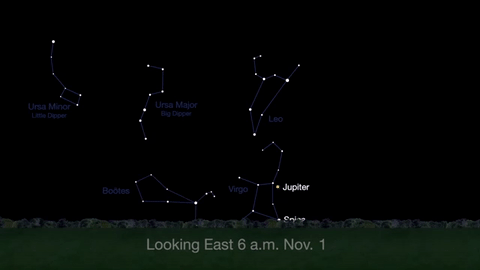
Just before dawn on November 23-24, see the waning crescent moon just above Jupiter.
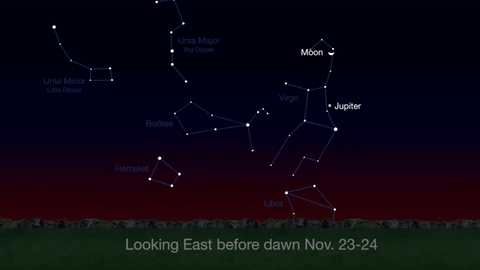
November is a great time to see the constellation Ceres as it glides past Cetus, the Whale and you will be able to see the dwarf planet move relative to the background stars, but you’ll need a telescope for this one.
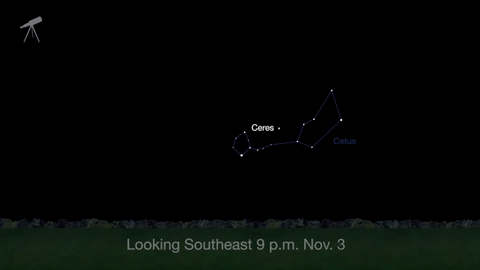
This month, just like last month, there will be three meteor showers--the Northern Tuarids, the Leonids and the November Orionids.
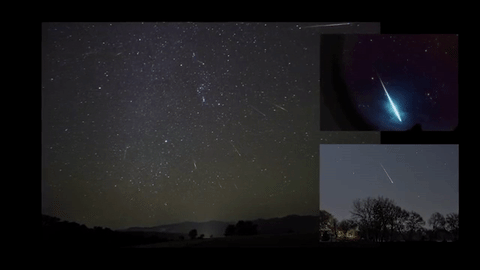
Watch the full November “What’s Up" video for more:
Make sure to follow us on Tumblr for your regular dose of space: http://nasa.tumblr.com.
-
 andy202405 liked this · 1 month ago
andy202405 liked this · 1 month ago -
 abedtimestory reblogged this · 9 months ago
abedtimestory reblogged this · 9 months ago -
 42angelfall liked this · 1 year ago
42angelfall liked this · 1 year ago -
 lafolie095 liked this · 1 year ago
lafolie095 liked this · 1 year ago -
 perfectlyimperfectmg liked this · 1 year ago
perfectlyimperfectmg liked this · 1 year ago -
 luminouslumity reblogged this · 1 year ago
luminouslumity reblogged this · 1 year ago -
 luminouslumity liked this · 1 year ago
luminouslumity liked this · 1 year ago -
 theamazingchen liked this · 1 year ago
theamazingchen liked this · 1 year ago -
 den1990 reblogged this · 1 year ago
den1990 reblogged this · 1 year ago -
 lets-not-be-famous liked this · 1 year ago
lets-not-be-famous liked this · 1 year ago -
 cowboy-in-a-suit liked this · 1 year ago
cowboy-in-a-suit liked this · 1 year ago -
 r0tt1ng-rat liked this · 1 year ago
r0tt1ng-rat liked this · 1 year ago -
 edgaralvarado13 liked this · 1 year ago
edgaralvarado13 liked this · 1 year ago -
 nienie888 liked this · 1 year ago
nienie888 liked this · 1 year ago -
 vebnus liked this · 1 year ago
vebnus liked this · 1 year ago -
 super-nerdi liked this · 1 year ago
super-nerdi liked this · 1 year ago -
 linyarguilera reblogged this · 1 year ago
linyarguilera reblogged this · 1 year ago -
 linyarguilera liked this · 1 year ago
linyarguilera liked this · 1 year ago -
 homojohns reblogged this · 1 year ago
homojohns reblogged this · 1 year ago -
 sadtrainnoises liked this · 1 year ago
sadtrainnoises liked this · 1 year ago -
 12green reblogged this · 1 year ago
12green reblogged this · 1 year ago -
 beargifu liked this · 1 year ago
beargifu liked this · 1 year ago -
 keatsonthebeach liked this · 1 year ago
keatsonthebeach liked this · 1 year ago -
 tllgrrl liked this · 1 year ago
tllgrrl liked this · 1 year ago -
 stevihj liked this · 1 year ago
stevihj liked this · 1 year ago -
 taviokapuddingbackup liked this · 1 year ago
taviokapuddingbackup liked this · 1 year ago -
 taviokapudding reblogged this · 1 year ago
taviokapudding reblogged this · 1 year ago -
 the-paola-a liked this · 1 year ago
the-paola-a liked this · 1 year ago -
 onevoiceamongmany liked this · 1 year ago
onevoiceamongmany liked this · 1 year ago -
 danielladelarue liked this · 1 year ago
danielladelarue liked this · 1 year ago -
 cemilyzc liked this · 1 year ago
cemilyzc liked this · 1 year ago -
 tanet0412 liked this · 1 year ago
tanet0412 liked this · 1 year ago -
 tsubamegirl liked this · 1 year ago
tsubamegirl liked this · 1 year ago -
 beboldbebravethings liked this · 1 year ago
beboldbebravethings liked this · 1 year ago -
 odetokeons liked this · 1 year ago
odetokeons liked this · 1 year ago -
 sizzlingkoalastarfish liked this · 1 year ago
sizzlingkoalastarfish liked this · 1 year ago -
 nyxxielove liked this · 1 year ago
nyxxielove liked this · 1 year ago -
 thefunkyperson liked this · 1 year ago
thefunkyperson liked this · 1 year ago -
 jo3ydr3w reblogged this · 1 year ago
jo3ydr3w reblogged this · 1 year ago -
 freekentuckythinker reblogged this · 1 year ago
freekentuckythinker reblogged this · 1 year ago -
 freekentuckythinker liked this · 1 year ago
freekentuckythinker liked this · 1 year ago -
 alku-main liked this · 1 year ago
alku-main liked this · 1 year ago -
 starspangledscarf liked this · 1 year ago
starspangledscarf liked this · 1 year ago
Explore the universe and discover our home planet with the official NASA Tumblr account
1K posts